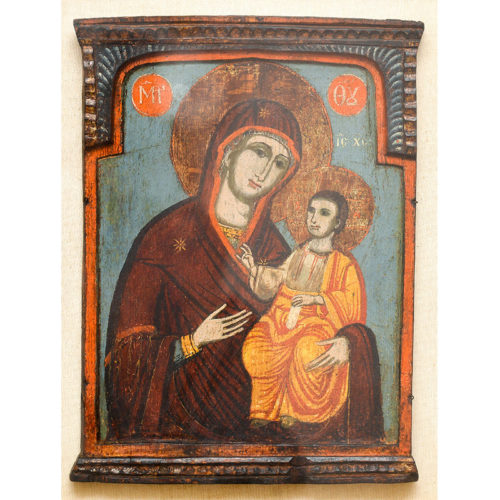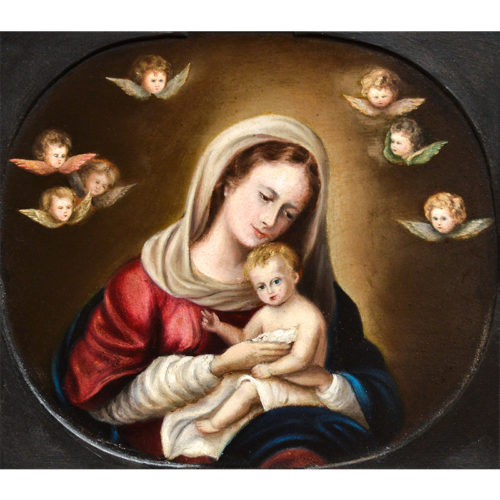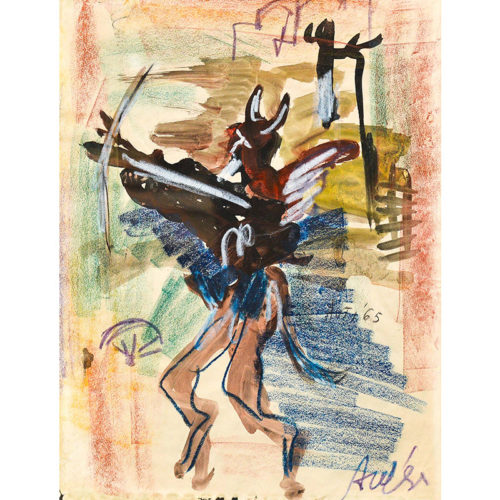Sacred wooden icon painted in oil depicting the Madonna Odigitria with the child. The Madonna Odigitria, Odighítria, or even Odegétria (from the Byzantine Greek Oδηγήτρια, the one who leads), otherwise also known as Madonna dell'Itria, is a type of Christian iconography widespread in particular in Byzantine and Russian art of the medieval period. The iconography consists of the Madonna holding the Child Jesus, seated in a blessing act, holding a rolled parchment in her hand and which the Virgin indicates with her right hand.
Period: 19th century
Measurements: In frame H 42 x L 33.5 / Icon H 29.5 x L 21 cm


